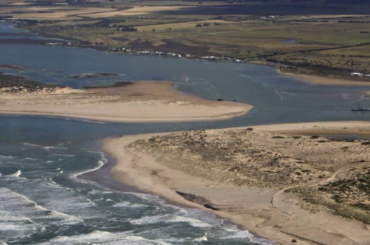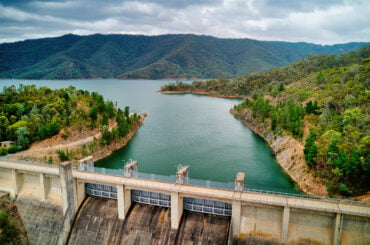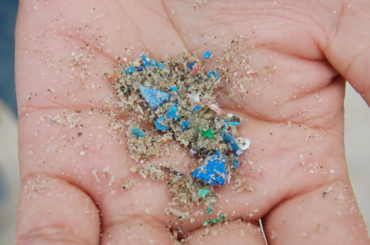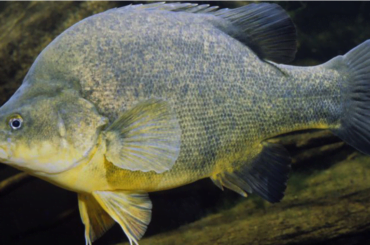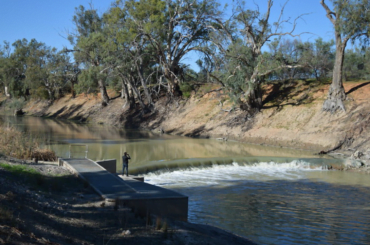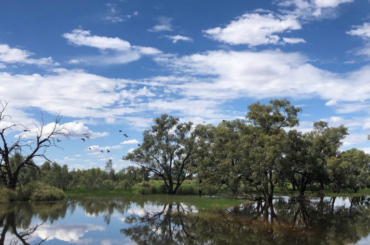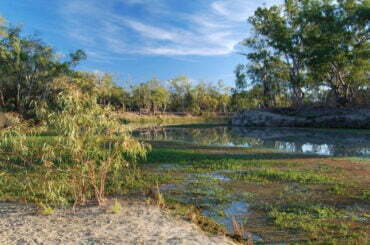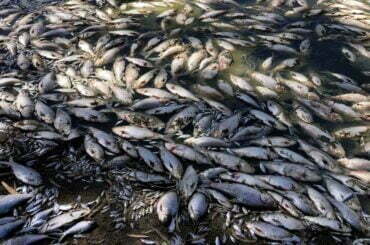From the mighty Murray cod to the beloved Golden perch, some of our favourite native species have enjoyed the benefits of learnings gathered from the Flow Monitoring, Evaluation and Research program (Flow-MER). The program uses research to investigate how water for the environment can be used to enhance specific parts or processes of the fish
Recent floods flowing down the Murray River have well and truly reached the Coorong, Lower Lakes and Mouth of the Murray. All 593 openings across 5 barrages, which for the last 80 years have controlled flows at the Mouth of the Murray, were fully open over the summer, with freshwater, saltwater, fish and other creatures
‘Flow hydrodynamics’, ‘turbulent kinetic energy’, ‘rheotactic behaviour’ - whilst these terms might not mean much to you, they are essential parts of native fish migration in the Murray-Darling Basin. The Murray-Darling Basin is one of the most regulated river systems in the world, home to over 10,000 barriers preventing fish from migrating. These barriers
Native fish in Australia are hardy, having adapted over millennia to live in one of the driest continents on Earth. However, research shows that even the hardiest of native fish species aren’t immune to the effects of human changes to natural environments. River regulation, in particular, alters aquatic ecosystems significantly, changing the natural environment and
Fish Movement Weirs and regulators in rivers and lakes can impede or block the movement of native fish, impacting their ability to migrate and move to suitable feeding or breeding areas. While all fish need to move around to some degree, ‘flow-specialists’ like Golden perch and Silver perch need to move along rivers as part
Microplastics are a global problem, infiltrating all levels of food systems and ecosystems. Now a multi-level governance issue, reaching across international, national and local scales, microplastics are most known for their impact on oceanic ecosystems, however, freshwater ecosystems are equally significantly impacted by plastics. Microplastics have been noticeably less researched in freshwater ecosystems compared to
Like many other important native freshwater fish species within the Murray Darling Basin, Golden perch (Macquaria ambigua) were immensely impacted by the 2018-19 fish kills in the lower Darling River. A 2021 study involving 18 researchers (by Zampatti et.al) looked into the species’ historical and current population demographics in the Darling River. The study provided guidance on how best to manage our
With a wet summer already here and more rain on the horizon, how will water managers and agencies within the Murray-Darling Basin be supporting rivers and fish populations this summer? This article will explore where responsibilities lie between water management agencies in the Murray-Darling Basin, what they will be doing to help native fish and
Understanding why, how and when animals move is important for the conservation of different species. In highly modified landscapes, the inclusion of movement ecology can improve the likelihood that conservation and restoration practices promote the resilience of native species. In the case of freshwater fish, they must move regularly within human-modified river systems to feed and spawn,
Tucked away in the north-west of New South Wales lies the Toorale National Park and State Conservation Area, a culturally and ecologically significant site. At the confluence of two ecologically significant rivers for the Murray Darling Basin, the Warrego and the Darling Rivers, the Toorale National Park and State Conservation Area were jointly purchased by
The Summer of 2018-19 saw horrendous sights in the Darling River, around 1 million fish dead from the river’s degradation. This sparked a study in 2020 by researchers Dr Martin Mallen-Cooper and Dr Brenton Zampatti from CSIRO and Charles Sturt University (Restoring the ecological integrity of a dryland river: Why low flows in the Barwon–Darling

